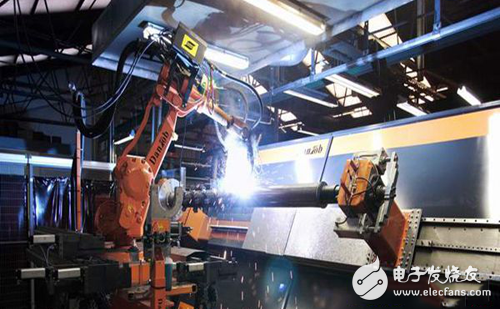Under the guise of China's manufacturing transformation and upgrading, industrial robots seem to usher in the east wind, but for large traditional industrial robots, they are increasingly difficult to handle the task of manufacturing precision parts, so it is difficult to adapt to the development of this mass customization era. . It is precisely because of the intelligence, the micro-presence of the application of robots in the Chinese market is indeed far from the "machine substitution" that people often hear.
The industrial transformation winds and whistle, but the robot can not afford the "smart" bondage?
At present, China's industrial robot industry is booming. The huge market of the robot industry is simulating the capital and technology of the society. Although the opportunities are huge, the industrial robot field that shoulders the possibility of subverting traditional manufacturing still faces a cruel reality. And the challenge.

blossom everywhere
As the world's largest manufacturing base, China's robot industry development pattern has shown a situation of competition.
As early as ten years ago, foreign robot companies have begun to lay out in the Yangtze River Delta and Pearl River Delta regions of China. They first developed the market with agent models, and gradually established R&D centers and engineering centers. When they have certain market demands, they will establish themselves. Production base.
At present, Germany's KUKA, Japan's FANUC, Switzerland's ABB, Yaskawa four major robot companies have fully entered the Chinese market, Italy, the United States, South Korea's robots and supporting enterprises have also laid out the Chinese market.
In the Chinese market, ABB has the most complete range of robots and models, and its market share is relatively high. In terms of price, ABB and KUKA are relatively high in foreign brands. Nowadays, benefiting from the decline of the cost curve of the robot, the foreign giants represented by the four giants such as KUKA and ABB have begun to adopt a strategy of lowering the price of the products in order to accelerate the localization of China, in order to further increase the market share.
While foreign companies have made themselves more suitable for the Chinese market ecology through local enterprises, domestic and large enterprises are also rushing to the beach. According to a survey conducted by the Ministry of Industry and Information Technology in early 2016, there are more than 800 companies involved in robot production and integrated applications in China. Chinese robots have also appeared in many independent brands. Shenyang Xinsong, Guangzhou NC, Changsha Changtai, Anhui Eft, Kunshan Huaheng, Beijing Machinery Automation Institute, etc. are a few companies with a certain scale and level.
From 2014 to 2015, various local governments have successively issued nearly 80 policies related to the development of the robot industry, and 42 robot-related industrial parks have been built or proposed nationwide. Since then, in 2016, China's robotics companies have blossomed everywhere. According to statistics, as of September, the number of robot companies in China has increased to 4,325, an increase of 12.58%.
Not only the policy, but also the government's emphasis on the robot industry has also entered the capital field. Many local governments have introduced preferential policies. For example, the robot industry park can use land for free, plus financial subsidies. Each unit can even get it. 20% subsidy.
According to data provided by the Russian Robot Association, from 2000 to 2015, the growth rate of China's industrial robot supply has reached 17%. The density of robots used in China has reached 49 per 10,000 people. According to the high-yield research data of industrial research institutions, the output value of domestic robots reached 1.64 billion yuan in 2015, and the demand in 2015 was 65,000 units. The market share increased to 15%, and the output value increased by 55%.
The capital-driven Great Leap Forward also attracted doubts. Yao Zhijun, secretary general of the China National Robot Testing and Assessment Center, pointed out that the robot industry has overheating concerns.
RF Connector Adapter,RF Adapters SMB To SMC,RF Adapters N To BNC,Plug To Plug Adapter Connectgor
Xi'an KNT Scien-tech Co., Ltd , https://www.honorconnector.com